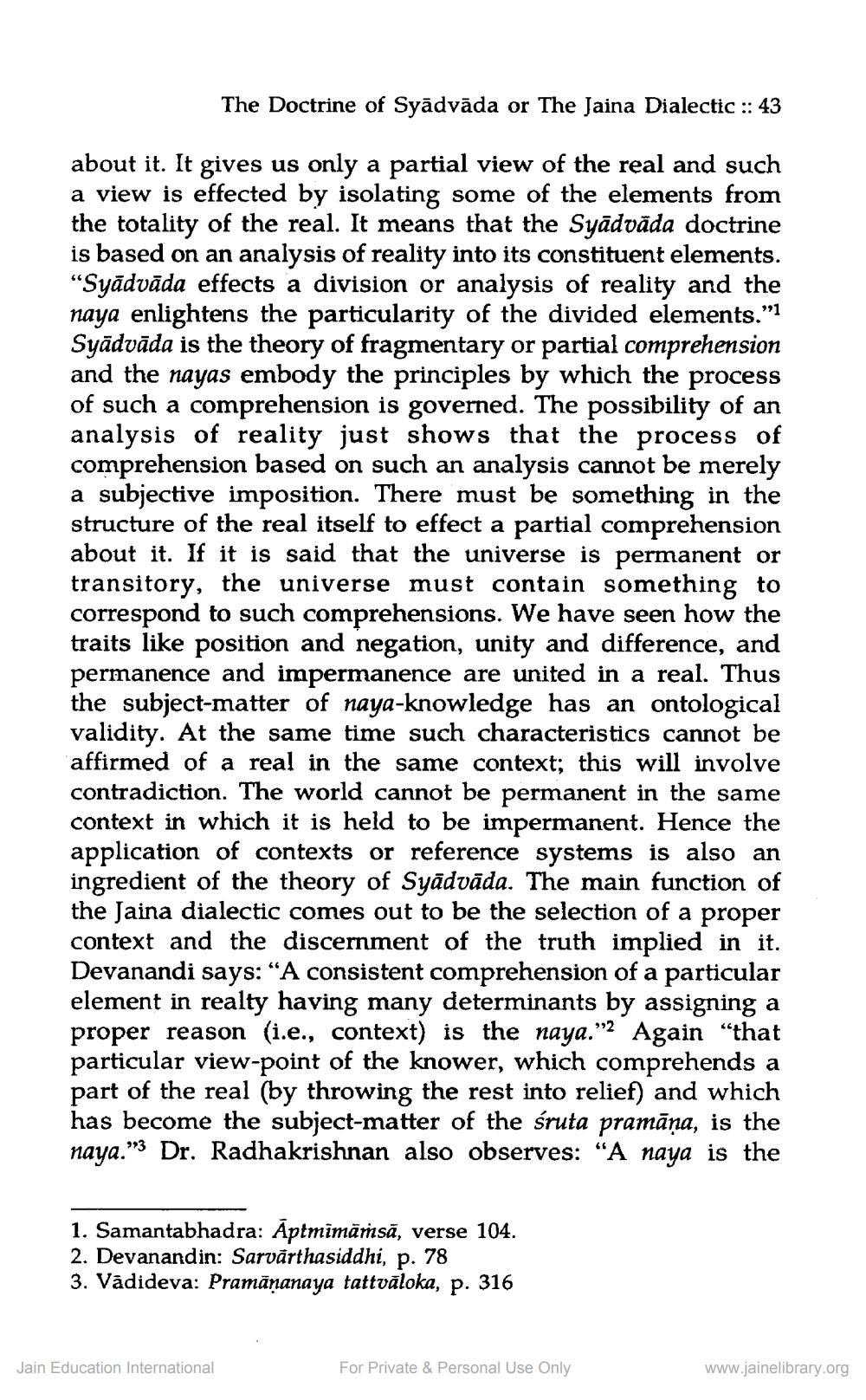________________
The Doctrine of Syādvāda or The Jaina Dialectic :: 43
about it. It gives us only a partial view of the real and such a view is effected by isolating some of the elements from the totality of the real. It means that the Syādvāda doctrine is based on an analysis of reality into its constituent elements. "Syādvāda effects a division or analysis of reality and the naya enlightens the particularity of the divided elements."1 Syādvāda is the theory of fragmentary or partial comprehension and the nayas embody the principles by which the process of such a comprehension is governed. The possibility of an analysis of reality just shows that the process of comprehension based on such an analysis cannot be merely a subjective imposition. There must be something in the structure of the real itself to effect a partial comprehension about it. If it is said that the universe is permanent or transitory, the universe must contain something to correspond to such comprehensions. We have seen how the traits like position and negation, unity and difference, and permanence and impermanence are united in a real. Thus the subject-matter of naya-knowledge has an ontological validity. At the same time such characteristics cannot be affirmed of a real in the same context; this will involve contradiction. The world cannot be permanent in the same context in which it is held to be impermanent. Hence the application of contexts or reference systems is also an ingredient of the theory of Syādvāda. The main function of the Jaina dialectic comes out to be the selection of a proper context and the discernment of the truth implied in it. Devanandi says: "A consistent comprehension of a particular element in realty having many determinants by assigning a proper reason (i.e., context) is the naya.' Again "that particular view-point of the knower, which comprehends a part of the real (by throwing the rest into relief) and which has become the subject-matter of the śruta pramāņa, is the naya."3 Dr. Radhakrishnan also observes: "A naya is the
,,2
1. Samantabhadra: Āptmīmāmsā, verse 104.
2. Devanandin: Sarvärthasiddhi, p. 78
3. Vadideva: Pramāṇanaya tattvāloka, P. 316
Jain Education International
For Private & Personal Use Only
www.jainelibrary.org




